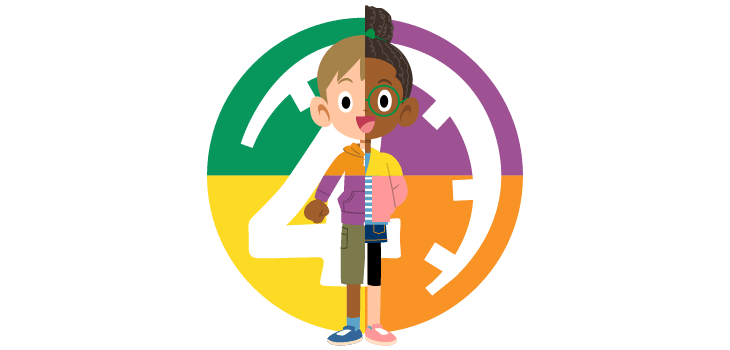Personalization in education allows you to tailor instruction based on a child’s unique needs, skills, abilities, and even interests. This, in turn, gives students options on how and what to learn, as well as opens the door to self-paced learning.
If you’re an experienced homeschooler, you know how beneficial personalized instruction can be. For those of you who are considering homeschooling, getting in tune with your child’s particular learning preferences, strengths, and needs, can help you in providing an individualized approach to education. Doing so will help them learn and retain information more effectively, gain confidence, build on their strengths, and help them adapt and find ways to navigate through challenges.
Why is Personalized Learning Important?
Personalization in education allows parents and teachers to focus on the needs of an individual child, and since students learn differently, it only makes sense to teach them and challenge them in different ways.
Being able to provide your child with personalized instruction is just one of the many benefits of homeschooling. But even if you don’t homeschool, there are still ways to give your child a customized education. Supplementing what your child learns in school is a great opportunity to provide one-on-one attention and instruction that will help clear up any confusion and allow your student to learn more effectively.
Self-paced learning frees a student from the one-size-fits-all approach to education that prevents them from learning effectively in a way that’s best for their unique needs, interests, challenges, and abilities. A customized education allows students to progress at their own pace, whether that means taking their time with challenging topics or subjects they struggle with, or moving along at a quicker pace in material they enjoy more and master more efficiently. In addition, students are able to be challenged appropriately, based on their skill set and knowledge.
How to Meet Individual Needs of Students?
The first thing you need to do to meet the individual needs of your student is identify what his or her specific areas of weakness and strength are. Once you’ve identified how your student learns best and what motivates them to learn, you can try the strategies below to help you meet the needs of your student.
- Pre-teach difficult concepts before the actual lesson begins
- Let students know what the objective is for each lesson
- Teach your students how to be good listeners. This includes taking mental notes, asking questions, reviewing material
- Provide worksheets and study guides if possible, as well as scripts and/or closed captioning
Personalized instruction can help all students reach their full potential, and it can be especially beneficial to students with special needs. Find out how you can plan your instruction to help your child with special needs thrive and feel empowered.
How Does Time4Learning Help Parents Provide Personalized Instruction?
One of the greatest benefits of self-paced learning is that students can learn anywhere, any time. This flexibility gives parents the opportunity to provide a customized education for their student, whether they homeschool or not.
Many educators find that using technology to provide more personalized instruction can prove successful with a variety of learners. Although Time4Learning teaches the material and assesses understanding with quizzes and tests, parents are free to incorporate additional resources, curricula and any other outside material that will benefit students.
Below are some of the Time4Learning features that help parents provide their students with a customized education.
- Access to one grade level above and one below student’s default grade.
- Ability to change levels anytime, as well as change courses for high school students.
- Students can repeat lessons for further understanding and/or explanation; and retake tests and quizzes.
- Depending on the grade level, students have access to printable worksheets, offline project ideas, and free unit studies to help provide a blended learning environment.
- 24/7 access means students can learn when it’s best for them, and when he or she is most productive.
- Students can work on different grade levels by subjects.
- Student-paced approach allows them to progress on their terms and at their own pace.
- Detailed lesson plans allow you to locate specific topics within different grade levels to help your child review previous concepts and gain an understanding of the basics, before moving on to more advanced concepts.








Is this program common core aligned? I’m looking for a program that is not common core.
Hi! We haven’t changed anything to align, but since common core is a set of standards, there could be similarities between our scope and sequence and some of the CCSS. Having said that, we do provide parents will all lesson plans so they can pick and choose which activities their children complete. 🙂
My son is currently enrolled in distance learning through our school district, but uses outside teachers. He is in 6th grade. The learning is mostly done on his own, a teacher is available if needed. He is not great at reading/ comprehension skills, so a lot of reading with little explanation has been difficult. Of course it just started, so maybe it will get better.. but looking into other options such as time for learning.
Hi Renee! Thanks for considering Time4Learning. If we can answer additional questions or help you get started, please don’t hesitate to contact us. 🙂 https://www.time4learning.com/curriculum/contact_us.php